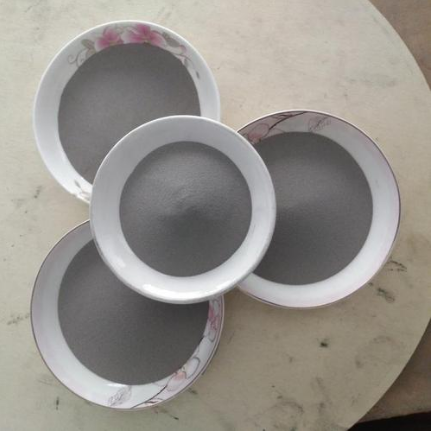

current position:Information and data>Emerging engineering materials——Steel Bonded Carbide
Steel-bonded cemented carbide is a composite material prepared by powder metallurgy with steel as the binder phase and refractory metal carbides (mainly tungsten carbide and tungsten carbide) as the hard phase. The performance characteristics of steel-bonded cemented carbide are as follows:
1. Extensive process characteristics
The main performance of steel-bonded cemented carbide is between steel and cemented carbide. It has the characteristics and advantages of both materials and is an emerging engineering material that fills the gap between them. Compared with steel, it has high hardness (hardness can reach HRC60~72 after quenching and tempering), high wear resistance and good hardenability; at the same time, it also has the advantages of machinability, heat treatment and weldability.
The steel-bonded cemented carbide products have good machinability, heat-treaability and weldability. The steel-bonded cemented carbide can be turned, milled, planed, drilled, and ground with ordinary processing equipment and tools. of machining. Its shape and size can be changed by forging, and the internal structure of the material can be improved, thereby improving its performance. It can be welded with the steel or alloy itself by welding methods such as butt welding, inlay welding, electric welding, vacuum welding, surfacing welding, etc. to expand its application range.
2. Steel-bonded cemented carbide has good physical and mechanical properties
Steel-bonded cemented carbide has high hardness, its wear resistance is comparable to that of high cobalt cemented carbide, and it has high impact resistance. A large amount of nearly spherical titanium carbide is dispersed in the steel-bonded cemented carbide. After correct grinding, the nearly spherical titanium carbide particles are "relief" on the surface of the workpiece, which makes it have a very low friction coefficient and good self-lubrication. , so that the material has strong scratch resistance and anti-adhesive wear resistance. Steel-bonded cemented carbide also has a small specific gravity, high damping characteristics at natural frequencies (with excellent shock absorption).
3. Steel-bonded cemented carbide also has excellent chemical stability
Steel bonded alloys can withstand a certain high temperature, have good oxidation resistance, and resist the corrosion of various media (such as atmosphere, gas, fresh water, sea water, oil, acid, alkali, salt and some liquid metals). Its corrosion resistance depends on the type of binder phase, so the binder phase composition can be adjusted according to different needs to make it have different corrosion resistance.
Steel-bonded cemented carbide combines the characteristics of steel and cemented carbide, and constitutes its own unique comprehensive performance advantage. This excellent comprehensive performance makes it widely used in many departments of national economy and scientific research. Including machinery industry (molds, construction machinery, electrical appliances, automobiles, tractors, rolling stock, agricultural machinery, etc.), electronics industry (radio, semiconductors, electronic computers, etc.), metallurgical industry, chemical industry (petrochemical, rubber and plastics and chemical raw materials Mixing and processing, etc.), instrumentation, geology, building materials industry, light industry (textile, sewing machines, watches, daily hardware, etc.), as well as defense and military industry, navigation, aerospace and other fields that have special requirements for material specific gravity and comprehensive performance.
Compared with tool steel, steel-bonded cemented carbide is used to manufacture various tools and molds. Compared with tool steel, it can greatly increase the service life of the mold by several times to dozens of times, or even hundreds of times, and the economic effect is extremely significant. For example, it is used to make molds for cold heading, cold punching, cold extrusion, drawing, drawing, cutting, blanking, forming, printing, die casting, etc.
Steel-bonded cemented carbide has extremely low friction coefficient and self-lubricating properties, as well as good oxidation resistance and corrosion resistance, so it is an excellent material for making wear-resistant parts, wear-resistant tools and sealing devices. Such as guide rollers, guide rollers, threaded sleeves, spline sleeves, wire feed rollers, bearings, gas bearings, valve parts, rotary engine blades, sealing rings for various pumps and pipelines and other mechanical sealing rings, medical equipment parts and Rolling tools, grinding tools, rolls, drill sleeves, perforated plugs, nozzles, filing plates, boring bars, etc.
Steel-bonded cemented carbide has high elastic modulus, rigidity and excellent damping characteristics, which can eliminate the vibration caused by itself and even the machine. It is widely used in the production of rigid anti-vibration tools and parts. For example, it is used to make anti-seismic parts for heavy bulldozers, aircraft landing gear and other equipment.
Due to the high wear resistance and low friction coefficient of steel-bonded cemented carbide, it is also increasingly widely used in measuring instruments such as measuring fixtures. Such as quantity, card, fixture, gauge, caliper, block gauge, plug gauge (cylindrical plug gauge, thread plug gauge, plate plug gauge, etc.), precision measuring instruments and various fixtures, etc.
Because of its high hardness, good impact toughness and excellent cost performance, steel-bonded cemented carbide is a better material for making impact and crushing tools. Such as rock drill bits, roadheaders, breaking hammers, etc.
Steel-bonded cemented carbide can also be used to make anti-magnetic and wear-resistant components that work in radioactive environments, such as certain components required in the atomic energy industry.
Hot information

